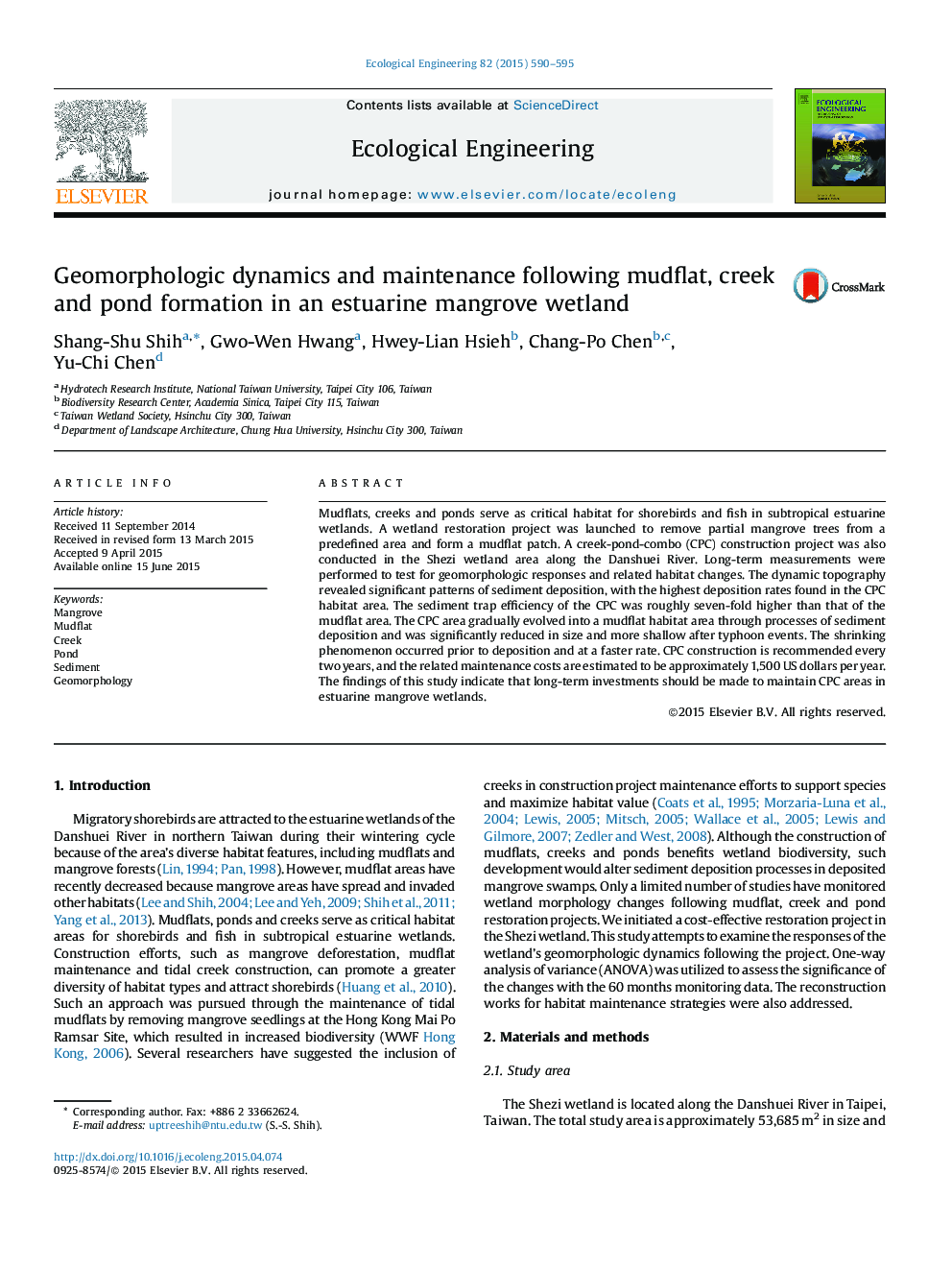| Article ID | Journal | Published Year | Pages | File Type |
|---|---|---|---|---|
| 4389011 | Ecological Engineering | 2015 | 6 Pages |
Mudflats, creeks and ponds serve as critical habitat for shorebirds and fish in subtropical estuarine wetlands. A wetland restoration project was launched to remove partial mangrove trees from a predefined area and form a mudflat patch. A creek-pond-combo (CPC) construction project was also conducted in the Shezi wetland area along the Danshuei River. Long-term measurements were performed to test for geomorphologic responses and related habitat changes. The dynamic topography revealed significant patterns of sediment deposition, with the highest deposition rates found in the CPC habitat area. The sediment trap efficiency of the CPC was roughly seven-fold higher than that of the mudflat area. The CPC area gradually evolved into a mudflat habitat area through processes of sediment deposition and was significantly reduced in size and more shallow after typhoon events. The shrinking phenomenon occurred prior to deposition and at a faster rate. CPC construction is recommended every two years, and the related maintenance costs are estimated to be approximately 1,500 US dollars per year. The findings of this study indicate that long-term investments should be made to maintain CPC areas in estuarine mangrove wetlands.
